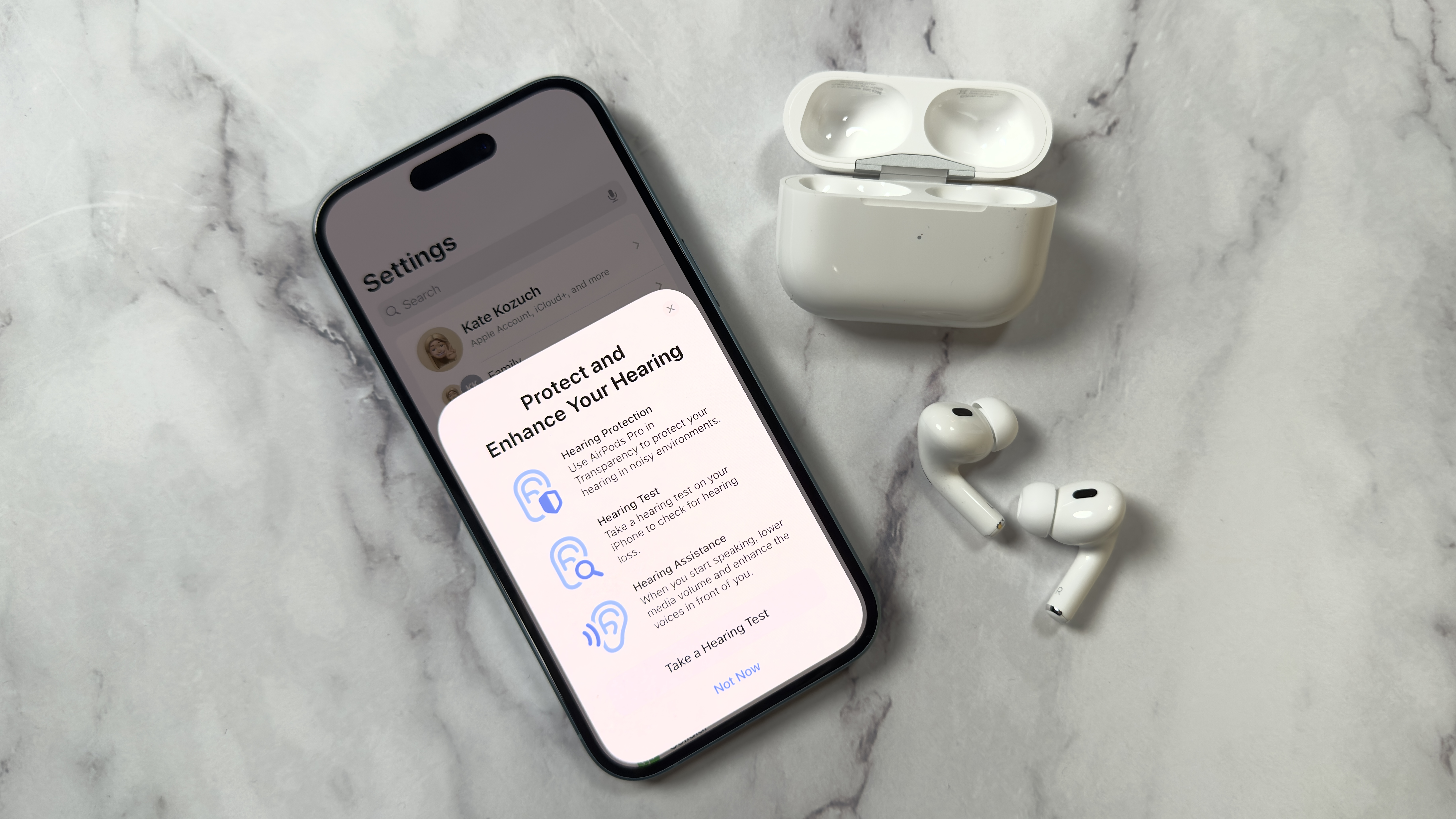AirPods 2 users are getting 3 big hearing health features — here's how they work
Three new hearing health features, including hearing aid functionality, arrive next week

Apple is getting ready to roll out what seems like one of the company's most exciting health innovations to date. AirPods Pro 2, the most premium pair of Apple wireless earbuds, are being updated with three hearing health features including hearing aid functionality.
To establish the hearing aid experience, the AirPods Pro 2 menu (which you can find in your iPhone's Settings app) has been outfitted with a hearing test that can be completed from basically anywhere in just a few minutes. The clinically-validated process produces the equivalent on audiogram you'd get from an audiologist.
@tomsguide ♬ original sound - Tom’s Guide
And, whether you have diagnosed hearing limitation or not, enabling hearing protection will help limit your exposure to environmental sounds that are harmfully loud. Think: concerts, sports games, or even just blow drying your hair.
We've been able to test out these features with someone who has hearing loss, but for everyone else who's ready to try out these features when they become available as of the week of October 28, here's what you'll need to know.
Hearing Test
The first feature you might want to try of the new hearing health tools is the hearing test. Apple conducted a study that included about 200 participants in order to achieve FDA approval.
Taking the hearing test starts with automatic background noise test, making sure the ambient noise levels are quiet enough. Even if a place with a low frequency hum, ambient sound may interfere with the hearing test so it's important to find a place that's super quiet. level is OK.
Next, you'll take an tip fit to check how it works with acoustic seal. If for some reason your current eartips don't fit properly, and you've long lost the additional sizes (no, just me?) Apple is now selling a fresh set for $12.99.
Sign up to get the BEST of Tom's Guide direct to your inbox.
Get instant access to breaking news, the hottest reviews, great deals and helpful tips.
During the hearing test itself tones will be played in a series of 3 pulses. You'll have to tap the screen whenever you hear a tone, stating with your right ear and then transitioning to your left hear. Once completed, your hearing test will show you the dBHL or the measurement of your ability to hear sounds at certain levels. Your results may be symmetrical or asymmetrical, meaning your hearing might be different in both ears. You'll also be able to review an audiogram chart that visualizes the 8 frequencies benchmarks of clinical standard hearing tests.
Hearing Aid
If you test for mild to moderate hearing loss results, you'll be prompted to proceed with a hearing aid experience will be tailored to your audiogram. You can optionally input an audiogram from an audiologist, too. The only other requisite is you must be 18 years or older to enable the hearing aid functionality.
With your hearing app settings, you'll be able to adjust amplification, transparency balance and tone, ambient noise reduction and conversation boost. With media boost, you can also customize how that hearing profile works with playing music, video, calls and FaceTime with media boost. And not only can you adjust this in your AirPods setting menu, but helpful controls will be accessible as a shortcut in the Control Center.
For those who have never used OTC hearing aids before, it's important to note that it can take a few weeks to get used to hearing aid adjustments in every day scenarios. Trying the feature as someone without a hearing loss diagnosis, I heard a bit of reverb, though my friend with hearing loss noticed it as well. That said, after they had the AirPods Pro 2 in their ears for an about an hour, the sensation felt less foreign.
Hearing Protection
People who don't have hearing health should also be concerns with their hearing health. A hearing health study commissioned by Apple found that hearing damage can have adverse effects on a person’s overall health — not just ear health. One way people have been able to monitor loud sound exposure has been with the Noise app for Apple Watch that alerts you automatically when a harmful sound levels are detected.
According to the AHS, 1 in 3 people are exposed to loud environmental noise regularly. Some scenarios are obvious, like concerts and sports games. But other things like fitness classes and causes can cause hearing damage over time.
The new hearing health setting is made for everyday life and will now be enabled by default, reducing loud sound reduction across transparency and adaptive settings. While the headphone safety feature for listening to music and adaptive audio already existed, hearing protection is made specifically with decibel thresholds in mind.
Kate Kozuch is the managing editor of social and video at Tom’s Guide. She writes about smartwatches, TVs, audio devices, and some cooking appliances, too. Kate appears on Fox News to talk tech trends and runs the Tom's Guide TikTok account, which you should be following if you don't already. When she’s not filming tech videos, you can find her taking up a new sport, mastering the NYT Crossword or channeling her inner celebrity chef.

